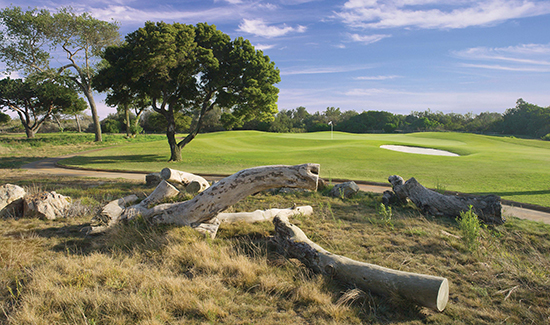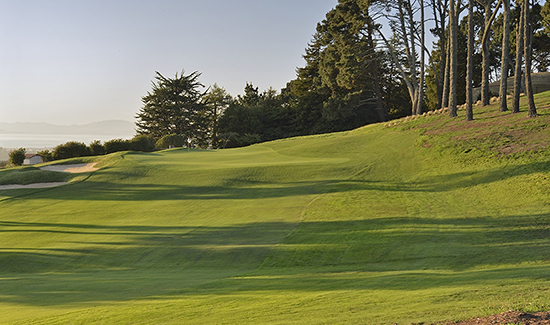-
Part of the fun should be hitting different shots and not always slamming away in pursuit of length. Golf is a thoughtful game, and thinking should always be rewarded.Forrest Richardson, ASGCA
Principal Golf Course Architect -
A golf course is a story to be unfolded. For the greatest enjoyment there should be anticipation, intrigue, the occasional chase scene and even a pinch of humor.
Forrest Richardson, ASGCA
Principal Golf Course Architect -
Golf is supposed to be fun. When you figure out the puzzle, you should score well — and scoring success is something I have always embraced in my work.
Forrest Richardson, ASGCA
Principal Golf Course Architect -
Jack Snyder used to say ‘Forrest, we want the golfer to come back, because that is the test of a great golf course,’ so this is my goal, not how difficult or punishing it can be.
Forrest Richardson, ASGCA
Principal Golf Course Architect -
Golf architecture is both science and art. The science part involves sustainability and quality turf. When the art goes along hand-in-hand it’s a happy marriage.
Forrest Richardson, ASGCA
Principal Golf Course Architect -
Golf courses don't 'just happen' — the vision begins with the land — and comes to life through a blend of art and science. We're painting on the biggest canvas imaginable.
Forrest Richardson, ASGCA
Principal Golf Course Architect -
Golf holes have personality — at least they should. To create a course full of similar looking and similar playing holes is to take away one of the greatest aspects of the game.
Forrest Richardson, ASGCA
Principal Golf Course Architect
-
Links at Las Palomas
-
Olivas Links
-
The Hills at Promontory Club
-
Baylands Golf Links Hole 12
-
The Hills at Promontory Club
-
The Hills at Promontory Club
-
Arizona Grand Resort
-
The Short Course at Mountain Shadows
-
Berkeley Country Club
-
The Hideout
-
Peacock Gap
What is the one thing we’ve learned in golf design? The game is supposed to be fun. That is where we begin.
Forrest Richardson began designing and building golf courses in his backyard. One of his early creations was Rolling Rocks, a desert layout with natural arroyos and tin can cups. The joy of realizing your childhood dreams doesn’t happen all that often. Forrest is fortunate.
Today, Forrest Richardson and his team bring a rich and diverse combination of experiences to the table on behalf of clients throughout the world. Each project is treated with creativity, detail, and passion. With results praised and awarded — but mostly enjoyed.
Designing golf courses, including site planning, is at the heart of what we do. Even when evaluating existing golf facilities, the following represent key steps to realizing successful projects:
Project Feasibility
Site Evaluation & Selection
Routing Plan Studies
Entitlement Consulting
Probable Cost Analysis
Schematic Design
Design Development
Shaping Plan Development
Greens Plans & Details
Grassing & Landscape Consulting
Specifications
Irrigation Design Coordination
Water Feature Design Coordination
Bidding & Negotiation
Contractor Evaluation
On-site Observation During Construction
Grow-In Consulting
Branding & Environmental Graphics
Land planning services associated with golf course projects are part of our core services and capabilities. However, we prefer the term Land Design because it more accurately represents what we do. In 2020 Forrest Richardson formed LandBalance, a dedicated division to work with clients toward creative, exciting and sustainable planning solutions.
Click here to access the LandBalance website.
Remodeling and renovation differs from restoration in that original features and designs are not necessarily brought back to life. In remodeling, a course and its design intent may be changed from the original design. In renovation, a course is generally modernized to the point that restoration of features may not be practical or desirable. The following are some of the components to remodeling and renovation work:
Historical Research
Course Evaluation
Safety Analysis
Agronomic Analysis
Arbor Analysis
Club Workshop Sessions
As-built Survey Coordination
Master Plan Development
Master Plan Presentation
Bidding & Negotiation
Contractor Selection
On-site Observation During Construction
Grow-In Consulting
Remodeling & Renovation Projects
Historic Restoration Projects
Reinventing golf facilities often involves creating a “new” golf course. Very often the best approach is downsizing the footprint of the facility to allow for other land uses such as development, alternative recreation or other future uses. Important steps in reconfiguration and downsizing are:
Market Analysis
Market Needs
Course Evaluation
Restrictive Land Use Conditions
Safety Analysis
Agronomic Analysis
Arbor Analysis
Club & Neighborhood Workshops
As-built Survey Coordination
Financial Pro Formas
Master Plan Development
Master Plan Presentation
Bidding & Negotiation
Contractor Selection
On-site Observation During Construction
Grow-In Consulting
Restoration is the clearly defined process of bringing classic golf courses back to life. In many instances, golf features deteriorate over time, leaving the essence of the course somewhat lost to time. Through diligent research and careful analysis we are able to piece back together the original intent and location of many elements of the original design. The following represents many of the steps involved in this specialized undertaking:
Historical Research
Course Evaluation
Safety Analysis
Agronomic Analysis
Arbor Analysis
Club Workshop Sessions
As-built Survey Coordination
Master Plan Development
Master Plan Presentation
Bidding & Negotiation
Contractor Selection
On-site Observation During Construction
Grow-In Consulting
Berkeley Country Club
Historic Restoration Projects
Alternative facilities take many shapes and forms. Our work has included innovative par-3 courses, practice venues and teaching areas. Such facility types and areas are returning to golf as a way to involve more people in the game and keep them interested when there may not be time for a traditional 18-hole round.
We hold dear the traditions of the game, but we also understand the compelling need to reach out and make golf fun and less intimidating for beginners and players with less ability than the scratch or near-to-scratch golfer. Projects which are not traditional 18-hole, regulation-length courses are not treated as second class. That is our commitment. Examples of our work in this area includes:
Practice Parks
Short Game Development Areas
Par-3 Courses
Precision Courses
Putting Courses
Teaching Centers
Indoor Hitting Bays
Project Feasibility
Site Evaluation & Selection
Market Analysis
Player/Member Surveys
Warranted Investment Pro Forma
Historical Research
Routing Plan Studies
Entitlement Consulting
Probable Cost Analysis
Schematic Design
Agronomic Evaluation
Safety & Risk Assessment
Landfills and reclamation sites, sometimes referred to as brownfields, are highly complex properties requiring specialized attention from an array of specialized consultants. Because of our success working with such sites, our familiarity allows us an advantage in working with clients who are considering golf development on these types of parcels. Our experience shows that there are many extra steps required to fully ascertain project feasibility and efficiency beyond those of traditional golf course projects. Irrigation design, for example, is significantly more complex on most brownfields due to the intrusion of water to soils that may contain environmental waste. This is just one example of an area which required expert consulting that goes beyond the traditional process. The following are typical steps and phases of projects involving reclamation sites:
Project Feasibility
Site Evaluation & Selection
Routing Plan Studies
Entitlement Consulting
Probable Cost Analysis
Schematic Design
Design Development
Grading & Shaping Plans
Greens Plans & Details
Grassing & Landscape Consulting
Specifications
Specialized Irrigation Design Coordination
Water Feature Design Coordination
Bidding & Negotiation
Contractor Selection
On-site Observation During Construction
Grow-In Consulting
No golf course is truly finished until the flagsticks are set into the cups and the embroidered sweaters folded neatly for sale in the proshop. While the details of nomenclature, logos, signage and graphics are often left for last, this is hardly a good decision. In addition to his background in golf design, Forrest Richardson spent much of his early professional career working in broadcast design, brand development and environmental design. Together with his partner, Valerie Richardson, the two operated a world-renowned design consultancy that completed major design programs for clients such as Disney, Hilton, News Corp., and AT&T. A focus of their work during this time was environmental and signage design for resorts and golf courses.
Attention to these details have continued in their work today. Specialized design for golf facilities includes logo development, signage, campaigns and integrated social media and marketing.







